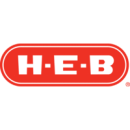Playing telephone is not the most efficient way to pass along a complex message — at least when compared with the option to communicate directly. Many designers know the feeling well, as they pass projects back and forth with engineers and product managers.
The game of product telephone can lead to long chains of revision processes, project inefficiencies and missed opportunities for innovation. H-E-B Digital and Braze have solved this problem by embedding designers on cross-functional teams.
“Embedding designers to work with research, product and engineering empowers us to really understand the space we work in,” Edgar Rios, senior product designer for H-E-B Digital said.
Both Rios and Sarah Wilson, lead product designer at Braze, believe that designers can grow when they collaborate closely with other disciplines.
“When we collaborate with other disciplines, we start to understand each other’s challenges and can more easily identify opportunities to solve together,” Rios said. “Oftentimes, designers are not only tasked with meeting the needs of the user, we’re also tasked to meet the needs of the business using the technology we have available.”
By working within cross-functional teams with a unified vision, designers are better enabled to meet those product challenges with a unified vision. Those benefits extend beyond the product to the business as a whole.
“The business gains in so many ways, including seeing greater employee satisfaction by providing an environment where designers can be themselves — highly creative, curious and empathetic humans who have autonomy and ownership over their work,” Wilson said.
Built In Austin spoke with Rios and Wilson about the opportunities and challenges of working on cross-functional teams and why they appreciate working as embedded designers.
H-E-B Digital provides solutions at scale and throughout the supply chain across H-E-B’s legacy business. For Edgar Rios, senior product designer, working on cart and checkout has allowed him to expand his capabilities while improving products that enhance everyday customer experiences.
What do organizations have to gain by embedding designers on cross-functional teams, rather than keeping them within a single, centralized design team?
As designers embedded in a team, we are expected to be well-rounded across many capabilities. This includes project planning, research, conceptualizing, visual design, interaction, prototyping and more depending on the project.
At H-E-B, I’ve had the opportunity to work in a cross-functional team that focuses on cart and checkout. I’ve also gotten to work closely with engineers that have helped me understand our capabilities. When it comes to problem solving, we plan as a team because we’re all very engaged and creative with our solutions. This isn’t because we’re technically adept, but because we’re all humans that have opinions and ideas about grocery shopping.
As designers embedded in a team, we are expected to be well-rounded across many capabilities.”
How do you avoid becoming siloed off from the other designers at your company? What does knowledge-sharing, collaboration and feedback look like among this group?
This is always a challenge, especially with junior or senior-level designers, because we might not have the visibility a manager-level designer has across different teams. At H-E-B, individual contributor designers are often meeting with our design managers to discuss what projects we’re working on and to identify any potential opportunities to work with other teams.
In addition to that, we have weekly “design labs” meetings where we get present in-progress work to other designers across teams. That is how we stay in the loop on what other designers are working on, and we also get to practice our presentation and critique skills.
Lastly, we try our best to thoroughly and neatly document all our designs so that other designers can easily access them when they need to.
How does a designer’s average workday change when they are embedded with product managers, engineers and others, rather than working in a centralized design/UX team?
Because design is so embedded in the work we do, working with product and engineering unfortunately sometimes results in more meetings. Although not always a perfect approach, we mitigate some of this by sharing our progress often and asking for asynchronous feedback. The good side of this, however, is that the whole team understands what goals we’re working towards and what challenges we face.

Braze is a customer engagement platform that facilitates connection between customers and brands by making marketing interactions more contextually relevant and meaningful. The focus on connection continues into their cross-functional design teams. “The end result is that users experience a product that is consistent, thoughtful and tightly-packed with feature releases,” Sarah Wilson, lead product designer, said.
What do organizations have to gain by embedding designers on cross-functional teams, rather than keeping them within a single, centralized design team?
For the past four years, I have served as the dedicated designer for the Braze product team that builds our software development kits (SDKs), as well as the composition experiences for SDK-powered channels like in-app messages, content cards and push notifications. I have spent many years shaping processes and benefiting from life as an embedded product designer. When designers are a dedicated resource for a product team, everyone benefits.
Embedded designers advocate for initiatives, shape the roadmap and gain important context into the problems they’re solving on day one. In molding processes and improving team efficiency over time, we develop close relationships with engineers and product managers, resulting in more frequent, tighter feedback loops and accelerated ideation and knowledge-sharing.
Embedded designers advocate for initiatives.”
How do you avoid becoming siloed off from the other designers at your company? What does knowledge-sharing, collaboration and feedback look like among this group?
Because designers are spread across roughly 10 different product areas at Braze, we are intentional with collaboration and knowledge sharing.
Biweekly, we meet as a UX team to share what inspires us and provide progress updates. We also hold working sessions with those designing similar user experiences, conduct one-on-ones with designers from other teams and host “staying connected” sessions that allow us to step away from work problems and play games, draw together and tell stories. In our monthly creative review, our brand and UX teams highlight relevant projects, share knowledge and ask for feedback. Lastly, we facilitate cross-functional ideation. Some of my favorite sessions are with folks outside UX. For example, I recently led a sketching session with my PM, engineers, designers from other teams and Braze experts from other departments such as customer success and marketing.
Each touchpoint has a different audience, goal and format. We’re constantly evaluating these processes and looking for new ways to stay connected!
How does a designer’s average workday change when they are embedded with product managers, engineers and others, rather than working in a centralized design/UX team?
I shared a little bit about what it is like to be embedded across teams, but before joining Braze, I worked at organizations where designers sat as a team and projects were assigned case-by-case. Typically, JIRA stories would roll in with pre-defined timelines, requirements and scope, then were vetted by design leadership. Many times, I felt like merely a set of hands executing the vision of other folks. The pressure to produce work within a matter of days often left little time for research and design investigations. From week to week, my priorities could change, different teams would be fighting for my time and I’d spend a lot of time searching for additional context.
While I typically worked on the same product, I had limited access to the cross-functional team members and often felt like a half-informed outsider. Engineering, user experience Researchers, designers and project management each sat on different floors, making it quite difficult to get ad hoc feedback, discuss long term visions and bond as a team.
That siloed approach may work for people, but if you’re searching for a more collaborative environment, check out some of the amazing open jobs at Braze.









